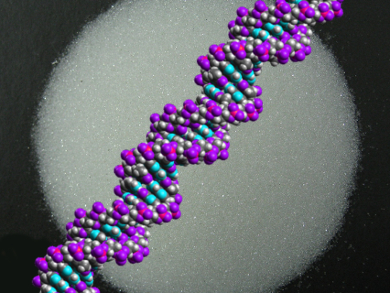To better understand how, for example, ribosomes and DNA polymerases work, it is of interest to detect individual biomolecules and observe them at work.
Frank Vollmer and colleagues, Max Planck Institute for the Science of Light, Erlangen, Germany, have developed a platform that transiently monitors specific molecular interactions without permanent binding of target molecules to the receptors. This increases the sensor lifetime, allowing interaction kinetics to be statistically analyzed.
The team used glass microspheres, to which molecules can bind, and shined laser light into them. The light is repeatedly reflected at the internal surface of the sphere until it multiplies along the inside surface. If a molecule is fixed to the surface of the glass bead, the light beam often travels past it. Because the light wave always extends somewhat outside the microsphere, an interaction occurs between it and the molecule. This interaction is greatly amplified due to the frequent contact between the light and the molecule. To amplify the field strength of the light wave in order to register single molecules, gold nanowires were fixed to the surface of the glass bead.
This approach makes it possible to use a single DNA receptor and to follow its successive interactions with various DNA segments in the sample solution. Based on the duration and frequency of the measured interactions, it is then possible to detect specific unlabelled DNA molecules.
The optical biosensor was tested with a sample containing both an exactly matching DNA fragment and a fragment that was not perfectly complementary. Based on their different kinetics, the two fragments could be distinguished.
- Single-molecule nucleic acid interactions monitored on a label-free microcavity biosensor platform,
Martin D. Baaske, Matthew R. Foreman, Frank Vollmer,
Nat. Nanotechnol. 2014.
DOI: 10.1038/nnano.2014.180




